#ww1 fortification
Photo






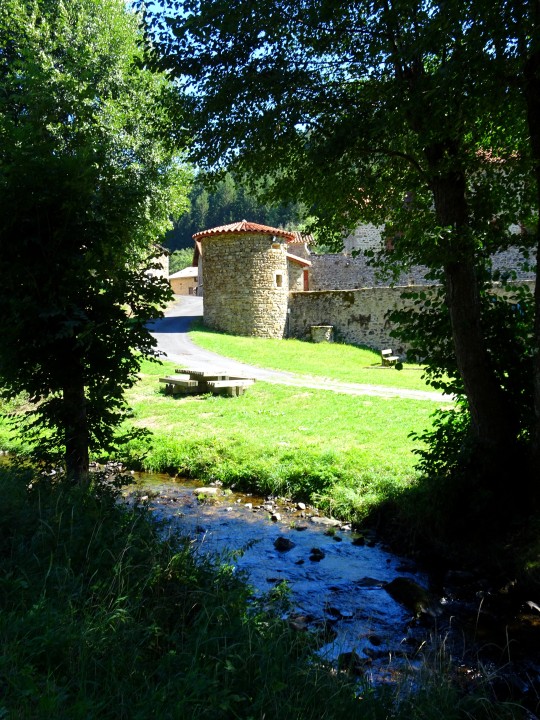
J’ai passé 4 jours en Auvergne, à la limite entre Haute-Loire et Puy-de-Dôme, histoire de replonger un peu dans certaines de mes racines,
Saint-Vert.
#auvergne#haute-loire#saint-vert#art roman#roman auvergnat#enceinte#fortifications#mur d'enceinte#vitrail#première guerre mondiale#ww1#vitraux
2 notes
·
View notes
Text
I love reading through pre-war military journals because occasionally you find someone who had some amazing insight into the future of war based on existing trends, and who absolutely nail much of how WW1 plays out.
Captain Crofton Sankey (what a fuckin English name) was one of these guys. A captain in the Royal Engineers and expert on Fortifications Sankey wrote a short article in a 1909 edition of the Royal Engineers Journal.

Looking at the Russo-Japanese War he picks up on the exact trends that defined WW1 five years later.

Pretty spot on there Crofton my old lad. So what'll happen then?

Yep that's pretty much how it goes.

Industrialised more than civilised, but otherwise yeah that's shockingly prescient.

And then you draw completely the wrong conclusion from it all. Spot on with how it will change the battlefield but completely wrong with what that means for war more broadly.
I can't really blame him for the conclusion, Jan Bloch on the other side of Europe had pretty much the same ideas, but goddamn were they both wrong on this point.
164 notes
·
View notes
Photo
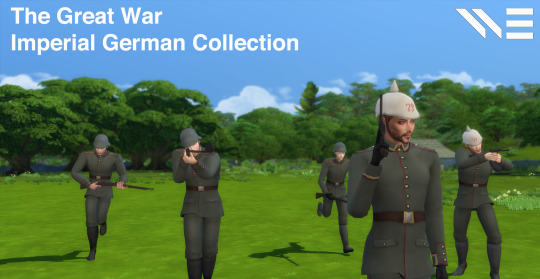



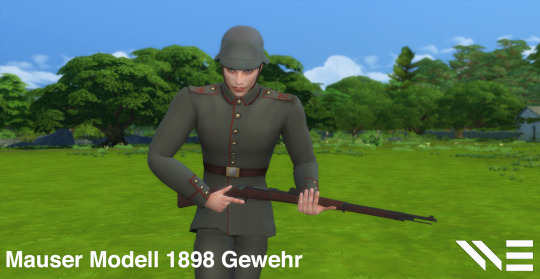
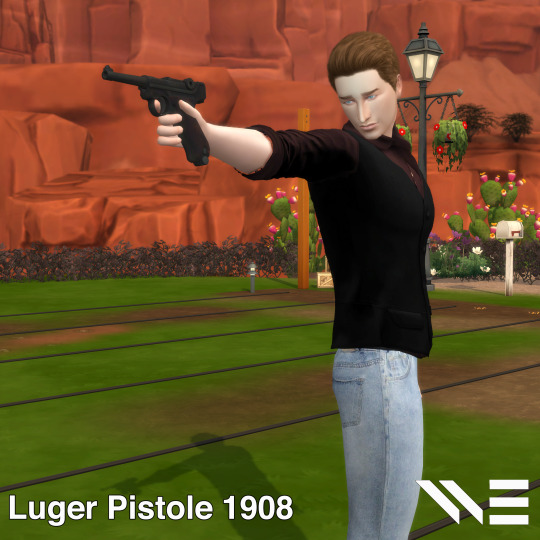


Imperial German Great War Weapons
Deutsche Vergangenheit begann mit der Geschichte über de............
@ts4-poses @ts4-poses-masterlist
DOWNLOAD
Special Thanks To: @chere-indolente For Creating such Magnificent Imperial German Uniform... Beau travail mon ami
Oh hello simmers, here we go with another list of the history again. Now we're talking about the historical Imperial German equipments during The Great War a.k.a First World War. These equipments are according to us, impressive since it reflects how the German arms factory would be run afterwards, especially in the Second World War. Okay, let's begi
Mauser Gewehr Modell 1898
Standard issue of the Landser, the foot infantrymen of the German federation soldiers (since every German states has their own army command) under Berlin's command
Bergmann Maschinenpistole 18 (MP-18)
Since the capture of the Italian "Villar Perosa" 9mm machine gun at the Alps front, the Germans reverse-engineered it as a Bergmann MP-18 to be issued for the "Sturmtruppe" (the unit which specialised as a trench warfare) as a suppressive weapon. Give them a Edge Over the Allied Force for few years of war.
Mauser C1896 Selbstladepistole (Mauser C96)
The modified version from the Mauser company of the previous Bordchart c93, the first patented semi-automatic pistol. Some version has a stock (which functioned as a holster too) After WW1 It Was Also Popular In Asia.
Luger Pistole 1908 (Luger P08)
Johann Luger's idea to simplifise the mechanism of the C96 series. First was to be made for the Swiss' army but later in 1908 adopted by Deutsche Waffenfabrik und Maschine (DWM). One of German Most Popular Pistol in 20th Century.
Luger Artillerie Modell 1917
The elongated barrel version of the P08 model, formerly was to be issued for the Sturmtruppe as a suppresive weapon since the pistols are more agile than the standard 1898 rifle. And some for the artillery units, which has a difficulty with the standard rifle. One of Earliest Machine Pistols that used in WW1
Mauser Panzerbüsche Modell 1918
As well as an armored vehicle rose at the Western front, the Germans had to find the countermeasure of the Allied's armor. Then they came to idea to create a 13mm rifle to penetrate steel layers of those armoured vehicle, Also Known As “T-Gewehr”
Licht Maschinengewehr 08/15
The Scaled-Down Version of Famous Maschinengewehr 08 Which is a one of popular Adaptation of Hiram's Maxim Creations. Using the same airframe mounting geometry as the earlier ordnance to allow interchangeability between the earlier lMG 08 and later LMG 08/15 models, with the still well-perforated cooling jacket reduced to a 92.5 mm diameter. The LMG 08/15 was introduced in 1917
Geballte Ladung (Stielhandgranate 24)
An Exotic Weapons from World war 1. Which The Stielhandgrante M24 grenade based could be used in an improvised "bundle" style with another six explosive heads (without their sticks) wired around the central stick grenade. These were known as Geballte Ladung ("concentrated load") and were very effective against armoured vehicles and fortifications. This anti tank grenade can be thrown very far, both because it is thrown as far as a ordinary grenade and because it has a 5 second fuse so it slides and bounces instead of exploding on impact as many other AT grenades do.
#the sims 4 cc#the sims 4#the sims 4 military#sims 4 weapon cc#the sims 4 weapon#the sims 4 gun#ts4gun#TS4#Decade Challenge#the sims 4 decades challenge#sims 4 decades#world war 1#ww1#ww1 germany#the sims#the sims 4 custom content#the sims gun#ts4 WWI
56 notes
·
View notes
Text
During ww1, the most atrocious trench warfare was mostly on the western front. the trivial reason is mostly because the western frontlines were shorter and the trenches were defended by very large number of soldiers who were supported by concentrated amount of artilleries.
the advancements of artillery and machine gun engineering, pretty much dictated the need for western front trench warfare.
present day russia is actually making a grave mistake in building elaborate trenches and thinking like world war 1.
putin and the russian war hawks cannot help but think only attrition warfare. they think it's like ww1 because russia has lots of artilleries, mrls, mortars, missiles, and bombers, so that elaborate ground defenses can wear down ukrainians.
the problem for russia is, nobody believes in dying by hundred of thousands in a single battle for any empire anymore. when russia signed armistice to exit ww1, much of its ground forces had disserted because tsar nicholas ii had abdicated/been murdered and much of the russian empire's military forces had been composed of all other fringe regions oppressed by russians.
so what's happening to russian forces right now is that their elaborate defensive lines do not have sizable ground forces willing to launch massive suicide attacks (which likely happened in bakhmut).
once a russian line is breached, ukrainians can very quickly turn the trenches into their benefit. unlike ww1, ukrainians can continue to advance despite of relatively slower pace, because the russians are imitating ukrainian defenses and falling back to their next defensive position and joining the rear units.
i bet those retreating russian troops are finding no one else in the rear because they either disserted, ditched already, or retreated even further back.
they're thinking, those mother fucking wagners, ate better, had better gears and weapons, got paid better, and they're back home fucking around with prigozhin, and meanwhile, they’re fighting Ukrainians for no good reasons and probably will starve to death if they don’t hurry up before the wagners return to kill them for not charging forward.
9 notes
·
View notes
Text


Another historic side, fortifing the southern coast of Cornwall, UK. it was built for WW1
15 notes
·
View notes
Text
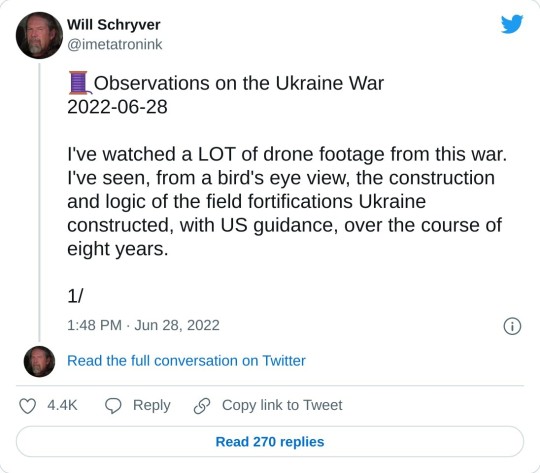
The logic of these ubiquitous pre-prepared fortifications harkens back to the 1864-65 Battle of Petersburg (US Civil War), with many WW1 innovations – a logic where victory depends on: - you not running out of men and ammo - the enemy being comparatively stupid 2/
Of course, when you think about it, the revealed logic of Ukraine’s long-prepared strategy for this war is, in many ways, a reflection of American military delusions and vanities, which multiplied and solidified over the course of the brief and fleeting “unipolar moment”. 3/
Despite not having “won” a war since 1945 (and then only truly against the Japanese), the US military is consumed with the vanity that it has *always* dominated opposing forces in every conflict. There is some measure of truth in this perspective. 4/
But it is irrelevant. Because, since no later than the Korean War, the US has not faced a peer or near-peer adversary in a high-intensity conflict. The US military has not been, for almost three-quarters of century, truly tested “under-fire”. This is an indisputable fact. 5/
The US has measured its battlefield mettle, for decades, against brave sandal-shod men with AK-47s, RPGs, and a certain savoir faire for constructing IEDs. But they have *never* faced anything like Russian artillery or missiles. Not even in Hollywood movies or video games. 6/
Consequently, the Pentagon’s self-perception of unquestioned supremacy has served to disinform and corrupt its doctrinal and procurement decisions for multiple generations of its officer corps. For most US generals and admirals, all putative opponents are underestimated. 7/
That said, I believe a great many have now been awakened from their intellectual slumber by the manner in which the Russian armed forces quickly assessed the Ukrainian order of battle, and then professionally adapted their strengths and tactics to decisively defeat it. 8/
Here is a brief summation of the Russian tactical approach to the Battle of the Donbass: Step #1: advance reconnaissance units (often in force, with dozens or hundreds of drones overhead) to assess the situation; draw fire; relay to commanders raw video and geo-coordinates 9/
Step #2: with target-correcting drone swarms relaying real-time strike video, proceed to savage the fortifications with towed and mobile artillery, MLRS in gradations of strength and precision, and even horrific thermobaric munitions for particularly suitable targets. 10/
Let smoke clear. Repeat Step #1. Still something moving there? Repeat Step #2. Repeat Step #1. Dead bodies everywhere? Step #3: Send in tanks and infantry to mop up. Move to next series of fortifications. And so on and so forth … 11/
This is why Ukraine now suffers hundreds of KIAs every day. And why, for months, the Russians have suffered very few casualties – at least a 1 to 10 ratio. Probably much lower. The artillery (with occasional air and precision missile strikes) is doing all the fighting. 12/
But back to Ukraine’s apparent strategy for this war, and the apparent US influence on that strategy. I will preface my commentary on this issue by stating that I am now thoroughly convinced Ukraine’s fatal blunder was following NATO's advice. 13/
I’ll grant the remote possibility that the Pentagon/CIA had a cogent view, far in advance, of the relative unlikelihood that a half-million-strong, well-armed, and presumptively well-trained (by NATO) Ukraine military didn’t have much chance against Russia. 14/
But watching drone video of Ukrainian fortifications has convinced me the NATO brain trust effectively disdained Russian military capability, and its commanders, in the course of their eight-year-long preparation of the eastern Ukrainian battlefield. 15/
They clearly believed the Russians would be stupid enough to assault Ukrainian fortifications using “modern” tactics entirely ill-suited to the task at hand. Their vanity persuaded them the Russians would beat themselves to pieces against an entrenched well-armed force. 16/
Indeed, they were so confident of the genius of their plan that they persuasively encouraged many hundreds (if not thousands) of now-killed or captured NATO veterans to “share in the glory” of humiliating the Russians and bringing down the Putin regime once and for all. 17/
They deluded themselves into believing the Russians lacked: strategic and logistical acumen, a sufficiently well-trained force, and – arguably the biggest miscalculation of all – sufficient stockpiles of ammo to conduct a protracted high-intensity conflict. 18/
In short, I have come to believe the US/NATO actually persuaded themselves that this “Mother of All Proxy Armies” they built in Ukraine seriously had an excellent chance to soundly whip the Russians in a battle situated on their borders. 19/
In other words, they not only grossly underestimated their enemy, but they ignored centuries of history that they somehow convinced themselves had no relevance to their 21st century aspirations to defeat Russia militarily and take a great spoil of its resources. 20/
But, as is now readily apparent to all objective, knowledgeable military analysts around the globe, the US/NATO-trained Ukraine proxy army been savaged by a patient, methodical, and significantly outnumbered Russian force, using century-old doctrines and tactics. 21/
Even more revealing is that once-vaunted and universally feared US/UK weaponry – almost all of it rather antiquated – has proven to be far less “game-changing” than the pea-brained strategists in Washington and Whitehall mistakenly believed. 22/
Javelins, NLAWs, and Stingers have been exposed as effectively useless against their intended targets. M-777 howitzers break down after just a few fires. GPS-guided “precision” munitions are routinely jammed by Russian EW counter-measures. 23/
Worse yet, the inculcation of NATO field doctrines in the minds of the AFU officer cadre has resulted in pervasively inflexible responses to battlefield events that developed contrary to expectations; discipline has disintegrated; improvisation has been paralyzed. 24/
To be sure, if one were to go by the laughable assessments of western think-tank propagandists and their dutiful lackeys in the media, “Ukraine is winning” and “the inept Russian military has been humiliated”. But more discerning observers around the world know better. 25/
What sober military men in potential adversary countries across the globe see is that Russia has, with one hand tied behind its back, eviscerated the massive, relatively well-armed and well-trained Ukraine military. The US intimidation factor has been forever compromised. 26/
More geopolitically significant, at least in the near future, is that European NATO members can also read the scorecard of this war: they now understand as they never could previously that standing on the NATO side of the field is hardly a guarantee of security. 27/
I am convinced NATO will not survive the results of this war in Ukraine. Sure, they’ll “keep up appearances” for the time being, but there can be no doubt that most now understand that siding with a rapidly declining empire is fraught with great risk and minimal gain. 28/
More concerningly, the Chinese have been watching all of these developments with great interest. They are almost certain to be emboldened to act decisively to secure their sphere of influence in the emerging multipolar world. Great dangers now await in east Asia … 29/end
=====
On the one hand, lol. There's a certain amount of gratification here. The USM is exposed once again as bumbling and incompetent.
On the other, there are several terrifying aspects. The first is that if the US military has been rendered into a husk incapable of bringing about by force the results that the bourgeoisie desire, and the tactics of economic warfare are showing themselves to also be increasingly inefficient (or even actively detrimental), then all that really leaves is nukes to threaten people with.
The same neoliberal rot that has made American politics impossible to reform has also made the military impossible to reform. The people responsible for the military's state are completely insulated from any sort of repercussions because it's functioning exactly as intended. Win or lose in Ukraine, Raytheon, Boeing, etc, are all going to make money, and the generals responsible for this blunder are all going to get jobs on those companies and go on to continue advising the government.
Most troubling of all is that this is all likely to make the US even more dangerous in the foreseeable future. The USM already had one big black eye thanks to the panicked retreat from Afghanistan. Now it's getting another by proxy because Ukraine is getting its shit shoved right in. So in order to save face, one of two things is probably going to happen:
The US picks some middling power to beat up on in an effort to try and put the fear of god back into the world. If the Republicans completely sweep the midterms, my money would be on Iran.
The US says "fuck it" and goes full tilt into a war with China. It's a conflict the US has long anticipated, and if they're going to fight it and actually hope to win it, sooner is better than later.
Neither of these are great options, but the US has positioned itself so that anything else is effectively impossible.
25 notes
·
View notes
Text
Here's Why Trenches in Future Wars Will Be Different (Video) - Technology Org
New Post has been published on https://thedigitalinsider.com/heres-why-trenches-in-future-wars-will-be-different-video-technology-org/
Here's Why Trenches in Future Wars Will Be Different (Video) - Technology Org
Trenches have been used in warfare for hundreds of years and will not disappear anywhere yet. They are important for defense and can still be effective. However, the war in Ukraine shows that the old architecture of military trenches no longer works in all cases. This is because of the advent of small attack drones, typically based on commercial UAVs.
Ukrainian soldier in a trench with an anti-drone electronic warfare weapon. Image credit: Mil.gov.ua via Wikimedia (CC BY 4.0)
Trenches, popularised in warfare during the First World War (although, of course, they were used much earlier), make it possible to create good defensive positions in the open fields. It is like fortifications sunk into the ground without steel or concrete. Almost the entire body of a soldier is hidden in the ground where enemy bullets cannot reach him.
In addition, if the trenches are well designed and established, they also provide a good cover from conventional artillery shells, because howitzers shoot in a rather flat trajectory and their shells cannot reach the bottom of the trenches. Mortars became popular during WW1 precisely as a way to attack trenches with high-trajectory projectiles.
Of course, modern artillery shells do have some tricks against trench warfare. For example, cluster munitions can release bomblets that can roll into trenches. Also, there are air-burst shells that explode above trenches, covering a larger area with shrapnel.
The shape of trenches, digging methods, and plans is a very complicated topic. The fact that you sometimes see trenches that resemble dotted lines or zigzags is not accidental. All of those forms have their functions and were developed through lessons learned in battle.
The war in Ukraine offers new lessons. Trenches provide cover from bullets and artillery, but soon new soldiers will be taught how to establish trenches that protect them from tiny drones. This includes suicide drones that are FPV-controlled and can dive even into deep dugouts and small drones-bombers.
Here’s an example of drone warfare against trenches in Ukraine:
Jūsų naršyklė nepalaiko HTML5 vaizdo įrašų
This video is said to show drone attacks with thermobaric munitions. It’s hard to confirm that, but it is evident that trenches don’t protect against small drones that well.
How can military trenches be improved to provide a better cover from small drones? It is difficult to say. Various jamming devices do help a little. Anti-drone nets and fences, better camouflage, closed dugouts and better drone-detection capabilities are all very important features. Time will tell how they can be incorporated in the future if trenches are still used.
Written by Povilas M.
Sources: Wikipedia, Censor.net
#air#architecture#artillery#Authored post#bombers#cluster#cluster munitions#concrete#course#defense#detection#devices#drone#drones#electronic#electronic warfare#Featured Military news#Features#Forms#Future#how#how to#howitzers#HTML5#it#lessons learned#military#Military technology#mortars#Precisely
0 notes
Text
Now back, with a mini-review of an RTS - The Great War: Western Front
After a month-long interruption (sometimes, life just refuses to get back on track), I am back to posting. Today, what I’ve got is a recommendation for an RTS game, but not for the reasons most people might think... because this RTS is The Great War: Western Front, the first RTS about World War 1 that I can remember seeing, and a very well-made one at that.
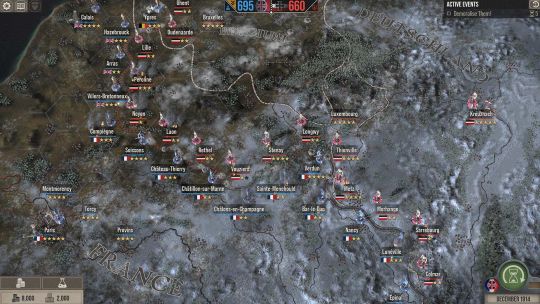
Content warning: descriptions of how abysmal the World War 1 tactics were, and how pointlessly these tactics wasted the lives of WW1 soldiers.
On the technical side, the game is made by Petroglyph - the studio built on the remnants of Westwood, the original devs of Command & Conquer - and it’s more similar in quality to Star Wars: Empire at War (one of their best outings) than Grey Goo or Forged Battalion (which are comparatively more meh). The gameplay itself is surprisingly addictive, in that “just one more turn“ manner - the game combines real-time and turn-based modes, like Total War - and because this is WW1, there is an interesting trench-building mechanic and asymmetry between attacker and defender. If that was the biggest noteworthy thing in the game, though, it would be a footnote and that’d be it; the reason to actually make a post about it is that it really gets across the sheer horror of World War 1 trench warfare, much more successfully than even other pop-WW1 games with an infusion of historical authenticity (e.g. Battlefield 1).

Let me give you the most blatant example. For the attacking force, the only way to approach enemy trenches safely is to constantly bombard them with artillery, suppressing machine gunners and riflemen so that they can’t fire back, while also destroying as much of the enemy line as possible and dodging enemy defensive artillery. But the realities of limited supply mean that even if you do that, and even if you flank the enemy trenches in early war (when fortification is not ubiquitous), a lot of soldiers on your side are still going to die. But the real horror begins when the computer player (in my case, on the standard difficulty, which affords advantages to neither the player nor the computer) attacks your side without doing those kinds of preparatory barrages, even when it’s got artillery superiority, and instead just repeats what the biggest names in WW1 failure - like Conrad von Hötzendorf and Luigi Cadorna - did, sending masses of infantry to overwhelm the defense and letting the infantrymen die in droves. Regardless of whether you defend well or not (the AI is actually quite good at probing for weaknesses in your line, which makes its behavior even more damning of real-life WW1 tactics), it’s easy to end up with a ceasefire after the AI side exhausts its resources, then see your losses at 3000 soldiers (which would be horrific enough), and enemy losses at 15000 soldiers with nothing gained (which is just atrocious). And, very conspicuously, the game is rated T for Teen; it doesn’t even need any graphic depictions of deaths or injuries to show how horrific - and wasteful - World War 1 was.
As a summary, I would recommend this game to any RTS fans who want to challenge themselves with limiting the damages of WW1 and ending it faster than the real-life incompetent commanders and stuck-in-the-past militaries of the time did... or to anyone who has the skills to play RTS games and wants to see for themselves how bad WW1 actually got.
#the great war: western front#rts#real time strategy#world war 1#what's the price of a mile?#cadorna snatches defeat from the jaws of victory#seriously world war 1 sucked and you will not convince me otherwise
0 notes
Text
I genuinely have no idea what this has to do with either theme but it’s on the list of things to research and I’m almost done anyways so let’s just get this done with.
animals have always been utilised in war in some degree even pretty small and unassuming creatures like the rat can be intentionally given diseases, I was genuinely curious if this was still allowed today and went on a small tangent on what is considered a war crime and somewhat got an answer with chemical weaponry and diseases being banned, as well as that flamethrowers were used so much in ww1 and ww2 that the Geneva Convention convention stepped in and stopped major military use of it in 1980.
https://www.icrc.org/en/document/ihl-rules-of-war-faq-geneva-conventions#:~:text=These%20include%20prohibition%20on%20exploding,%2C%20cluster%20munitions%20(2008)%2C
https://housedems.com/roberts-wants-flamethrowers-banned/#:~:text=Modern%20flamethrowers%20were%20first%20used,the%20Use%20of%20Incendiary%20Weapons.
ok so back on the topic at hand before the government comes knocking at my door, there exists a site linked that goes about 10 animals used in military warfare so let’s go over them
https://www.historyhit.com/animals-used-for-military-purposes/
1. Napalm bats
The US military’s Project X-Ray planned on releasing thousands of bats equipped with napalm charges in Japan. However, the plan was scrapped when some bats escaped in New Mexico, destroying an aircraft hanger and a general’s car.
Errant bats from the experimental bat bomb set fire to the Carlsbad Army Airfield Auxiliary Air Base in New Mexico.
2. Camels: walking water fountains
In the Soviet war in Afghanistan (1979–1989), Sunni Mujahideen fighters used camel ‘suicide bombers’ against Soviet occupying forces.
Camels were also used as mobile water tanks during the Muslim conquest of Syria (634–638 AD). First forced to drink as much as they could, the camels’ mouths were then bound to prevent cud chewing. They were slaughtered en route from Iraq to Syria for the water in their stomachs.
3. Dolphin bomb squad
Highly intelligent, trainable and mobile in marine environments, military dolphins have been used to locate mines by both Soviet and US navies.
Dolphins have also been trained by the US Navy Mammal Marine Program to attach flotation devices to the air tanks of enemy divers.
A dolphin equipped with locator. US Navy photo by Photographer’s Mate 1st Class Brien Aho
4. Infectious fleas and flies
Japan used insects as weapons in World War Two in order to infect China with cholera and plague. Japanese air planes sprayed fleas and flies or dropped them inside bombs over heavily populated areas. In 2002 an international symposium of historians found that these operations resulted in around 440,000 Chinese deaths.
5. Pyromaniac Macaques
Though it is difficult to confirm, Indian sources from the 4th century BC describe trained monkeys carrying incendiary devices over the walls of fortifications in order to set fire to them.
6. Dragon Oxen
Records describing the Siege of Jimo in 279 BC in eastern China tell of a commander frightening and subsequently defeating invaders by dressing up 1,000 oxen as dragons. The ‘dragons’ were released at the enemy camp in the middle of the night, causing panic among the surprised soldiers.
7. Warning Parrots
In World War One, trained parrots were positioned on the Eiffel Tower in order to warn against incoming aircraft. A problem arose when it was found that the parrots couldn’t tell German planes from Allied ones.
8. Missile flying pigeons
BF Skinner’s Project Pigeon
In the Second World War, American behaviourist BF Skinner devised a plan to train pigeons to ride in missiles and guide them to enemy ships. Though Project Pigeon was never realised, it was resurrected from 1948 to 1953 as Project Orcon for a second, last-ditch effort.
9. Explosive rats
Trench rats were a common horror of the First World War and so a common sight. In World War Two, however, British Special Forces used explosive dummy rats in order to disable munitions factories in Germany.
A Belgian NGO has also used rats to detect land mines through smell.
10. Sea Lions
Along with dolphins, the United States Marine Mammal Program trains sea lions to detect enemy divers. The sea lion spots a diver and attaches a tracking device, shaped like a handcuff, to one of the enemy’s limbs.
They are also trained to locate and recover military hardware as well as crash victims at sea.
Land, G. (2018) 10 animals used for military purposes, History Hit. History Hit. Available at: https://www.historyhit.com/animals-used-for-military-purposes/ (Accessed: February 19, 2023).
International Committee of the Red Cross (2022) Frequently asked questions on the rules of war, International Committee of the Red Cross. Available at: https://www.icrc.org/en/document/ihl-rules-of-war-faq-geneva-conventions#:~:text=These%20include%20prohibition%20on%20exploding,%2C%20cluster%20munitions%20(2008)%2C (Accessed: February 19, 2023).
Roberts wants Flamethrowers banned (2022) housedems.com. Available at: https://housedems.com/roberts-wants-flamethrowers-banned/#:~:text=Modern%20flamethrowers%20were%20first%20used,the%20Use%20of%20Incendiary%20Weapons. (Accessed: February 19, 2023).
0 notes
Text
A Starship Troopers FPS Game is Coming From the Squad Devs
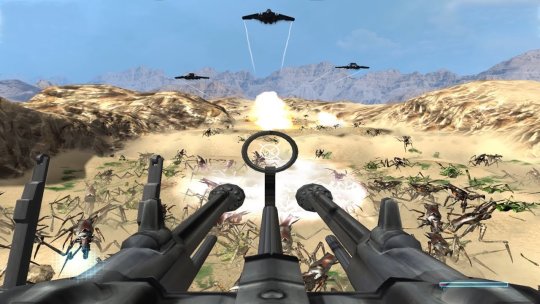
Offworld Industries, the creator of the WW1 shooter Beyond the Wire and the contemporary military shooter Squad, is currently working on a Starship Troopers first-person shooter. As in the 1997 Paul Verhoeven movie, Starship Troopers: Extermination will launch in Early Access the following year and pit you and your Mobile Infantry squadmates against the insectoid alien threat.
Starship Troopers: Extermination is a co-op game in which you’ll play as one of up to 12 soldiers, broken up into squads of four, on missions to eradicate the alien menace on the planet Valaka. Offworld Industries says you’ll have to balance combat with gathering resources and building up your base fortifications before ultimately extracting from the area on a dropship.
You’ll have your choice of three playable classes: assault, support, and defence. Working together, you’ll have to fend off bugs while building walls, towers, ammo stations, and more. Each class has its own progression path, with new weapons and perks to unlock as you complete missions.
https://www.youtube.com/watch?v=GDi0FjiTg2s
When Early Access kicks off in 2023, you’ll be facing five types of bugs on the planet’s surface: drones, warriors, gunners, plasma grenadiers, and tiger elites. The tougher enemies show up as battles escalate, and all this takes place on a large map with five separate zones.
Offworld Industries says it’ll have more to share about Starship Troopers: Extermination before long, and until then, you can check out our list of the best survival games on PC to hone your skills.
Read the full article
0 notes
Text
youtube
Isonzo - Official Launch Trailer
Available now on - PC, PlayStation & Xbox
https://store.steampowered.com/app/1556790/Isonzo/
https://store.epicgames.com/en-US/p/isonzo
ABOUT GAME:- Ferocious Alpine warfare will test your tactical skills in this authentic WW1 FPS. Battle among the scenic peaks, rugged valleys and idyllic towns of northern Italy. The Great War on the Italian Front is brought to life and elevated to unexpected heights!
World War One expands to the mountains of the Italian Front - beautiful but deadly in equal measure. Inspired by the two year struggle for control of the Isonzo river valley and the Alps during World War One, Isonzo elevates the WW1 Games Series, figuratively and literally.
From the makers of Verdun and Tannenberg …
Isonzo key features include:
Mountain warfare: Assaulting mountain fortifications, battling through ruined towns, and fording rivers are just a few of the challenges you’ll face as you fight your way through numerous enemy positions
Tactical multiplayer FPS: Choose your role and loadout carefully to survive this high altitude combat - play a sniper to pick off the enemy engineers before they can cut your wire, use rifle grenades to clear enemy machine guns, and much more
World War One Gameplay: Historical Offensive game mode based on real battles and focused on the unique challenges of Alpine warfare. Fight with 30+ WW1 weapons, poisonous gas attacks, and intense artillery barrages
Build for victory: Place your own wire, sandbags, trench periscopes, and more! Whether you’re digging in or on the attack, shaping the battlefield to your advantage will be key to victory
Faces of war: Make every class your own by picking from a variety of historically class-appropriate uniforms, accessories and headgear. As a finishing touch, you can even pick your mustache from several famous period-accurate styles!
Authentic WW1 atmosphere: Accuracy in everything from maps and weaponry to music and the uniforms – fight for the Kingdom of Italy or the Austro-Hungarian Dual Monarchy
#ISONZO#IsonzoItalianFront#LaunchTrailer#Historical#WorldWar1#Simulation#Action#FPS#Realistic#IndieGame#GamingInfoAndNews#Gaming#M2H#BlackmillGames#Lazyajju#Youtube
0 notes
Photo

Women constructing fortifications, Italy 1918
#ww1 history#ww1 centenary#ww1#world war one#world war 1#women#women in war#building#fortifications#italy#1918
24 notes
·
View notes
Photo
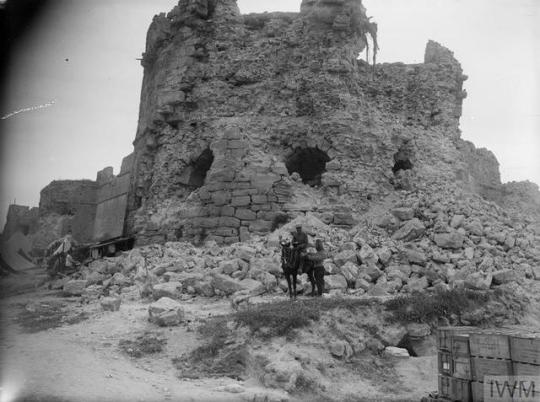
The wall surrounding the old fort at Sedd el Bahr, Cape Helles, the holes made by a 15 inch shell from HMS Queen Elizabeth during the bombardment of the 25th February, prior to the Gallipoli landings. Photo taken in May 1915.
38 notes
·
View notes
Text
More Narnia Spare Oom AUs
So I’ve like actually written a lot of this. But.... based on this lovely post by @athoughtfox and then @edmundjustking made the serious mistake of asking for me to elaborate and so I did , a little bit here . But... I have opinions about this, OK? And A LOT OF WORDS. REALLY A LOT OF WORDS.
Digory – Professor at Oxford, professor of philosophy and theology, renowned expert on the Oxford Franciscans, the Blessed Duns Scotus, and Gerard Manly Hopkins. Professor Kirke is trying to construct an elaborate theory of environmental stewardship and haecceity based upon his Narnia experience. An excellent theologian and a very bad Christian – he’s not been to church in over 30 years. Ace.
Polly – Amateur zoologist and naturalist --- “maiden” aunt HA! Always accompanied by a dog, a cat, an umbrella and a carpet bag. Drove an ambulance in France for the Red Cross in WW1 in France. Drives an MG. World traveler. Bisexual. Works at the Whipsnade Zoo and has a bad habit of always trying to curtsy in front of Peter.
Peter: Private, youngest member of Ox & Bucks 2d Battalion, D Company, Glider Corps (whose insignia is Bellerophon aboard Pegasus) and sees the first action on D-Day when his Horsa Glider crashes into the Caen Canal bridge (Normandy) (which becomes known as Pegasus Bridge). He’s wounded in hedgerow battles on the march to Paris, sent home to recover and (probably) never sees more action. (Unless he joins Captain America’s Howling Commandos and cleans up Hydra nests in former occupied Europe). Maybe ends up with T-Force, Ox & Bucks 1st Battalion, who are rounding up German scientists and high value targets and “persuading” them to come to England or America.
After he’s demobbed, he enrolls at Oxford and starts an affair with a married woman. He then drops out of Oxford as a dismal failure at the classics curriculum. He comes into some money and finally gets Aslan’s message and begins rebuilding a country for a 3rd time -- he ends up working in construction and literally becomes a rock on which England is rebuilt, as a carpenter and bricklayer. Ultimately he’s elected to Commons as the rep for Oxford-Cowley where his battles with Margaret Thatcher become legendary. Bisexual, married, two children, 6 grandchildren. Knighted in 1992.
Susan: Lying about her age and armed with forged identify papers, Susan begins running a spy through the British Embassy in Washington DC in the summer of 1942 to build support in the American Congress for the British war effort. She leaves school in 1943 and enters SOE training. She is deployed to Bénouville at a woman’s hospital to spy on the Nazi fortification of the Caen Canal which Peter’s Horsa glider crashed into on D-Day. Sometime thereafter, she is eventually able to return to England (and maybe hangs out with/has sex with Peggy Carter for a while in France on the road to Paris). Eventually, she is recruited to MI6/SIS with her partner from Washington and they eventually marry where they built networks of spies throughout the Balkans that are blown and murdered by the Cambridge 5. Her husband may die in Berlin in or around 1950 and/or she remarries. One daughter; one grandchild. COE Deaconess, international election observer, advocate for women’s pentathlon in the Olympics, always keeps wolfhounds and a really large handbag that she keeps a Little Joe crossbow in that she got during the War. Becomes Dame Commander in or around 1980.
Edmund: With forged papers, Edmund passes off as a British army private in Washington DC in 1943, becomes fluent in German and Russian, and is involved in espionage efforts in Greece and the Balkans that preceded Allied operations in the Mediterranean in 1943. He narrowly avoids a honey trap and seduction by a man with the aim of compromising him into becoming a Soviet agent – the Soviets are seeking information on the Venona project. After flirting with the SIS, he decides to not join his sister in espionage. He reads law at Oxford and works the Judges’ Trial at Nuremberg. He becomes a successful barrister and renowned human rights activist, with a particular focus on war crimes (with Lucy) and tirelessly advocates for the Chagoss Islands. Edmund refuses a knighthood for years because he wants Peter to get his first. He finally relents and becomes the Right Honourable Sir Edmund Pevensie but hates being called Sir. Sits on the Judicial Committee of the Privy Council. Bisexual, married, three children, five grandchildren, married to a Holocaust survivor. Always keeps cats.
Lucy: Leaves school in 1943 with forged identity papers to begin agitating for Greek famine relief and more aggressive action to stop the Holocaust and allow more Jews into England. Joins the Red Cross. Eventually becomes involved in smuggling food to the Channel Islands which are under Nazi occupation. After the war, Lucy advocates for families of Chinese men in the Liverpool area after the Chinese merchant sailors are secretly kidnapped and forcibly repatriated back to China. She eventually goes back to school and becomes a doctor. She and Edmund are involved war crimes investigations all over the world. Through NGOs, she operates clinics and advocates for security of the whole person (income, education, home, political stability, healthcare) as universal human rights. Short listed for a Nobel Peace prize twice. Has arrest records in 5 countries for civil disobedience. Bisexual. Marries an American, has three children and four grandchildren.
Eustace: Becomes a world-renowned paleontologist, with a focus on trying to find fossil records that can explain the worldwide mythology of dragons. Discovers a species of flying lizard, Draco Scrubb. Marries Jill, two children.
Jill: A respected artist and cook. She sells art to sporting magazines her mother and father run in the U.S. and Caribbean and also to paleontological and naturalist publications. Also active with her family, in the cause of Jamaican independence and politics thereafter. She purchases a cottage on the Isle of Wright that has portals to a magical place with pink water and blue sand.
40 notes
·
View notes
Photo

French soldiers in a trench probably somewhere on the Western Front during World War 1.
Source: University of Kentucky.
#ww1#wwi#world war 1#world war i#world war one#first world war#1910's#history#military history#trench#trench warfare#sandbags#fortifications#french troops#french army#adrian helmets#french soldiers#fortified#posing#european history#french history#french helmets#history of france#france#western front#fortification#entrenched#battlefield
91 notes
·
View notes
Text



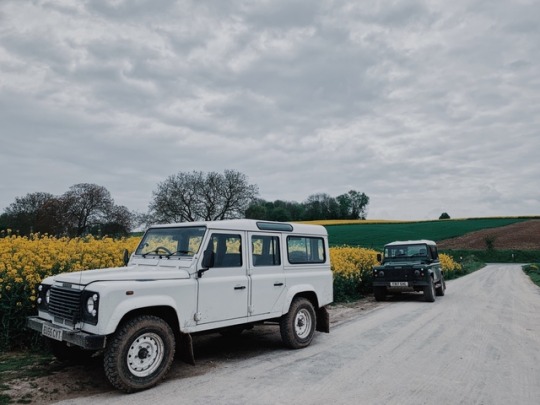
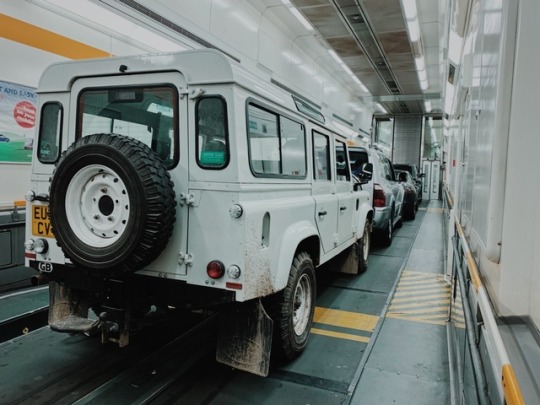
06/05/2019 - Day 3
Today we will travel north of Albert up the Ancre Valley making stops at the following;
- Newfoundland Park,
- Hawthorn Ridge,
- Sunken lane,
- The battlefield around Serre
Newfoundland Park
One of the largest areas on the Western Front where artillery craters and the trenches of both sides can still be clearly seen and even entered, which gives more feel to what the Canadians where going through prior to going over.
On the 1st July At 9.15 a.m the Newfoundland Regiment attacked as part of the second wave, Within half an hour they had suffered horific losses, with more than 90% becoming casualties. The regiment consisted of 801 strong, but the roll call the next day revealed that the final figures were 233 killed or died from injuries sustained from battle, 386 wounded, and 91 missing
Hawthorn Ridge
A German fortification that at 7:20 a.m. on the 1st July 1916, the British/allies set off explosives beneath the Hawthorn Ridge. As many attacks the attack of o Hawthorn Ridge was a costly failure, Casualties in the 86th Brigade were 1969 strong before 7:20 and after this attack 613 were killed and 81 were reported missing.
Sunken Lane
The Germans had protected Hawthorn ridge with a formidable series of defences, amongst these was the heavily fortified village of Beaumont -Hamel.
The objective was to take the village of Beaumont Hamel, The Lancashire Fusiliers were to lay in the sunken road which was chosen as the forming up point, and attack following a huge artillery barrage/massive mine being detonated. The attack resulted in 7 officers killed and 14 wounded, 156 Other ranks killed and 298 wounded with 11 missing presumed dead.
Trip Summary
After visiting the last remaining battlefields around Serre it was finally time to hand over the loaned CB radios, say thank you to Battlefields 4x4 staff and bid farewell to our fellow compatriots. The trip was such an amazing insight to WW1 a war which i think we take for granted at the sacrifice our fellow countryman and commonwealth brothers made over 100 years ago. We look forward to going on the WW2 tour in 2020.
If you are interested in going on this type of trip which i recommend then please use the following link https://www.battlefieldsby4x4.com/index.htm
10 notes
·
View notes